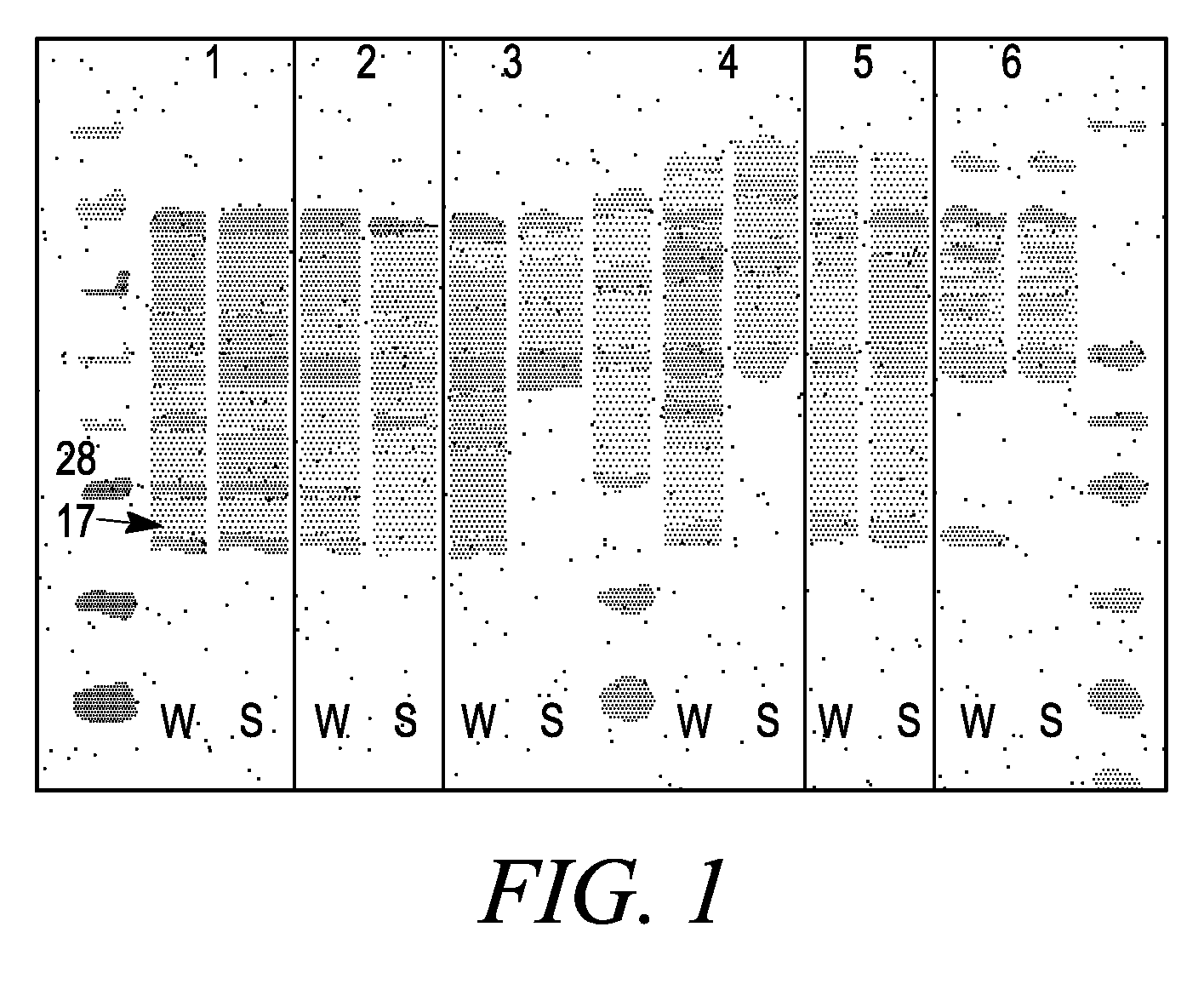Isolated phospholipid-protein particles
a technology of phospholipids and particles, applied in the field of in vitro protein synthesis systems, can solve the problems of difficult isolation of membrane proteins, and achieve the effect of improving the manufacturing process
- Summary
- Abstract
- Description
- Claims
- Application Information
AI Technical Summary
Benefits of technology
Problems solved by technology
Method used
Image
Examples
example 1
Manufacture of Nanolipoprotein Particles from Apolipoprotein and Phospholipid
[0215]Nanolipoprotein particles (PPPs) were made using the mature, processed form of Apolipoprotein A1, dimyristoyl phosphatidyl choline (DMPC), and cholate. The Apo A1 protein was synthesized in cultured E. coli cells (BL21 DE3*) that contained a construct that included a pEXP5-NT vector containing a his tag sequence (Invitrogen, Carlsbad, Calif.) and an engineered Apo A1 sequence from Invitrogen ULTIMATE™ ORF clone IOH7318 having the protein encoding sequence of Genbank gi 4557320 (NM—00039.1). The sequence was deleted at the five prime end to create a sequence in the plasmid construct that encoded the mature, N-terminally processed form of the human Apo A1 gene. The protein, lipid, and detergent components were incubated to form phospholipid-apolipoprotein particles in a self assembly process, after which the cholate detergent was removed by absorption to Bio-Beads SM-2 (Bio-Rad, cat #152-3920).
[0216]A D...
example 2
Co-Translation of a Scaffold Protein and a Membrane Protein in the Presence of Phospholipid Produces Active Soluble Membrane Protein
[0221]In separate experiments, and bacteriorhodopsin, a seven transmembrane domain membrane protein, was synthesized in vitro in a reaction in which the MSP1 membrane scaffold protein was also synthesized. In control reactions, bacteriorhodopsin and MSP1 were synthesized separately in the in vitro synthesis system. The EXPRESSWAY™ coupled in vitro transcription / translation system (Invitrogen, Carlsbad, Calif.) was used to produce MSP1 from the a pIVEX2.4b vector that included the MSP1 gene and bacteriorhodopsin from a pIVEX2.4b vector.
[0222]One microgram of each template was added to 100 microliter reactions in which DMPC liposomes were either present (30 micrograms) or not present. In a control reaction, pre-made purified “nanodiscs” that included DMPC and the MSP1 protein were included in the protein synthesis reactions. 35S labeled methionine was inc...
example 3
In Vitro Synthesis of Membrane Proteins with PPPs
[0223]To demonstrate the wide range of membrane proteins that can be translated in soluble form when PPPs are present in the reaction, different human membrane proteins were synthesized using an IVPS system that included PPPs that included the MSP1 membrane scaffold proteins and 1-palmitoyl-2-oleoyl-phosphatidyl choline (POPC). Clones from the Invitrogen Ultimate™ ORF clone collection (Invitrogen, Carlsbad, Calif.; Invitrogen.com; searchable clone collection provided at orf.invitrogen.com / cgi-bin / ORF_Browser) were used to express membrane proteins in the EXPRESSWAY™ in vitro protein synthesis system to which 100 ug of PPPs that included the MSP1 scaffold protein and POPC. Clones used for expression of GPCR proteins included: IOH14234, endothelin receptor type B (EDNRB) (NM—000115.1; SEQ ID NO: 48); IOH 27433, opiate receptor-like 1 (NM—000913.3; SEQ ID NO: 49); IOH28351 cholinergic receptor muscarinic 2 (NM—000739.2; SEQ ID NO: 50); I...
PUM
| Property | Measurement | Unit |
|---|---|---|
| Fraction | aaaaa | aaaaa |
| Current | aaaaa | aaaaa |
| Digital information | aaaaa | aaaaa |
Abstract
Description
Claims
Application Information
 Login to View More
Login to View More - R&D
- Intellectual Property
- Life Sciences
- Materials
- Tech Scout
- Unparalleled Data Quality
- Higher Quality Content
- 60% Fewer Hallucinations
Browse by: Latest US Patents, China's latest patents, Technical Efficacy Thesaurus, Application Domain, Technology Topic, Popular Technical Reports.
© 2025 PatSnap. All rights reserved.Legal|Privacy policy|Modern Slavery Act Transparency Statement|Sitemap|About US| Contact US: help@patsnap.com



